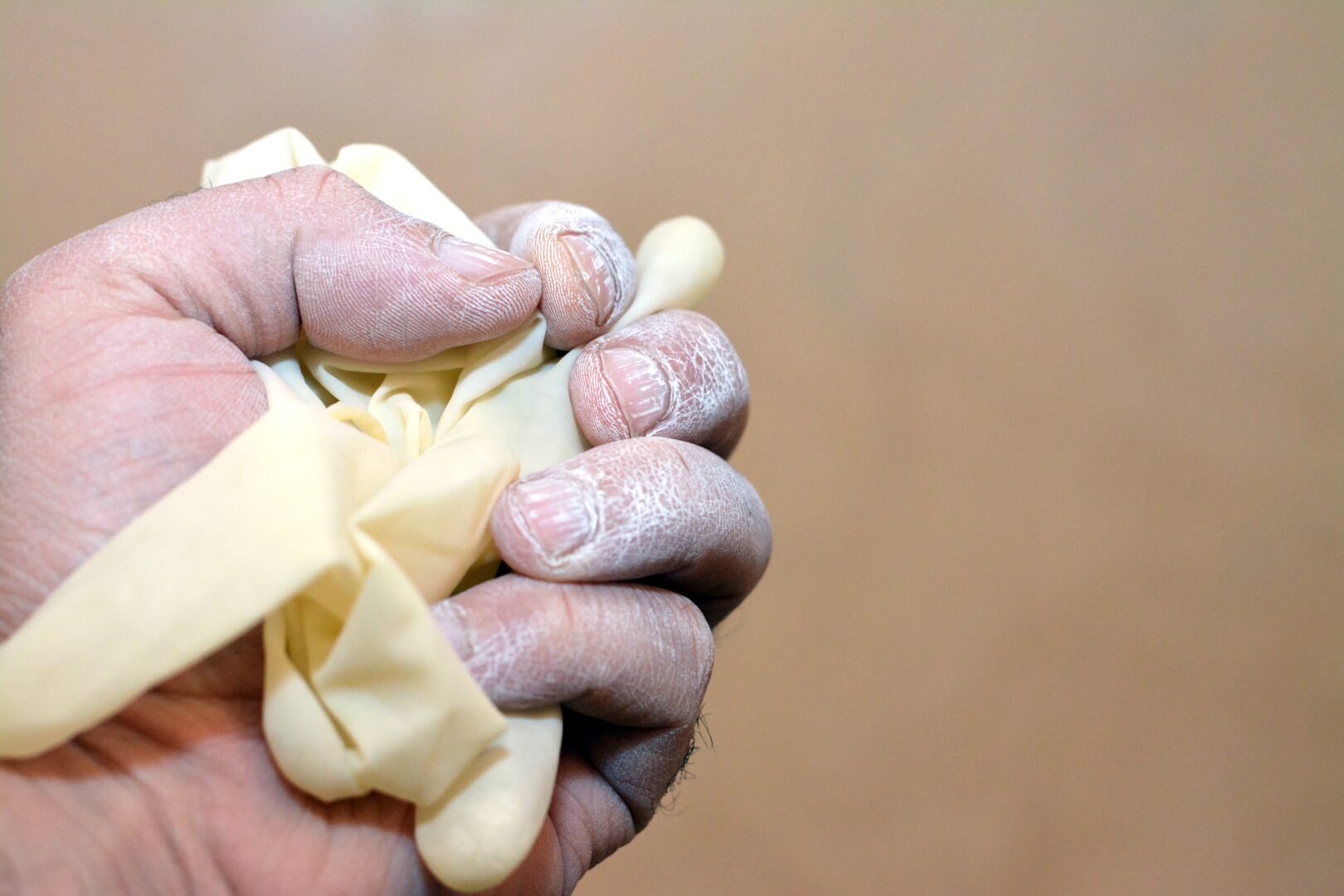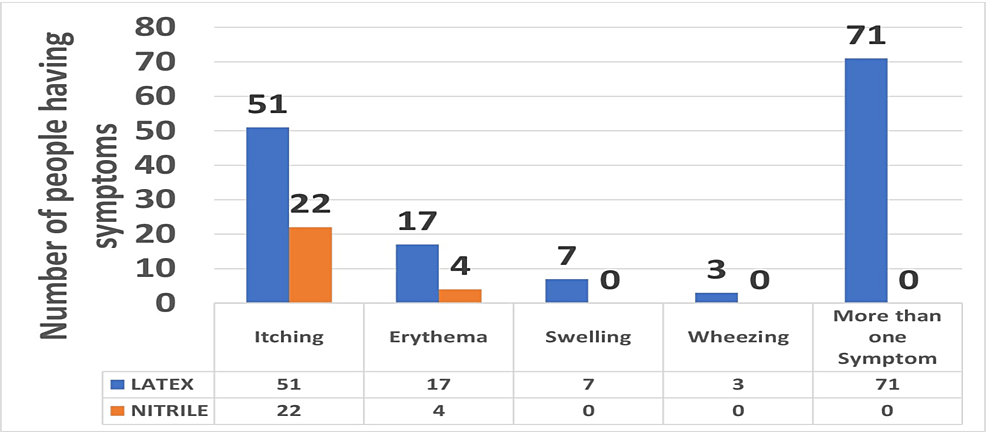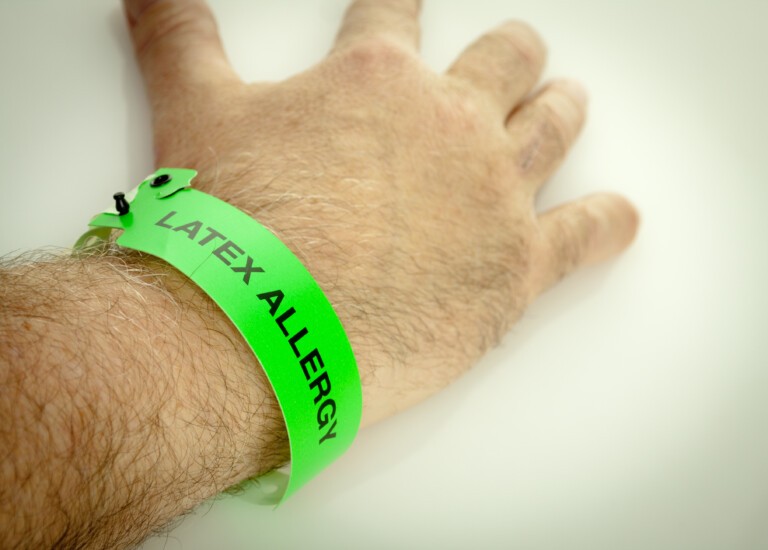What to Do About Hypersensitivity: Solutions for Prevention and Repair
Dental professionals are at high risk of developing skin hypersensitivity due to frequent exposure to chemicals, irritants, and allergens. Skin hypersensitivity can cause a range of symptoms, including itching, redness, swelling, and blisters. These symptoms can be uncomfortable and painful, and they can also interfere with the dental professional’s ability to perform their job.
Hand dermatitis disproportionately affects dentists. A survey of Swedish dentists found that dental professionals—both dentists and chair assistants—were 10% more likely to suffer from hand dermatitis than the general population. Additionally, dentists were more likely to report numbness of the fingers or finger pain.
What Causes Skin Hypersensitivity?

The causes of skin hypersensitivity in dental professionals are varied. Irritant contact dermatitis is a common type of skin hypersensitivity that develops as dry, itchy, irritated areas on the skin around the area of contact. Allergic contact dermatitis can result from exposure to accelerators and other chemicals used to manufacture rubber gloves or from exposure to other chemicals found in the dental practice setting.
Another simple cause of hypersensitivity comes from the need to frequently wash one’s hands. Routine, thorough hand washing is an essential part of maintaining a sanitary environment and preventing the spread of infection. Constantly washing your hands, however, can cause irritation, dermatitis, or cracking and drying out of the skin.
Contact Dermatitis
One common source of hypersensitivity is allergic contact dermatitis, an irritated and often itchy skin response to being exposed to an allergen/irritant.
A review of articles about skin conditions and dental professionals found that the most common allergic reactions were in response to latex, acrylates (a polymer commonly used in dental materials), and formaldehyde (formocresol, a type of formaldehyde compound, is part of drugs used in endodontic procedures). Constant exposure to these substances increases the likelihood of irritation and hypersensitivity.
Allergic contact dermatitis is called a “type 4” or delayed hypersensitivity reaction. This means that it occurs roughly 48 to 72 hours after being exposed to the allergen. What’s happening on an internal level is that your immune system— specifically, CD4+ T-lymphocytes—recognizes that there is an antigen on the skin surface. Then, these activated immune cells release cytokines, leading to the visibility irritated skin that is characteristic of a dermatitis response.
These reactions are extremely common in all professions where frequent hand washing is required, but particularly in the dental field, where the constant handwashing is compounded by the various irritants in the products and chemicals used in daily dental work.
Allergies and Irritants
A recent study surveyed over 350 dentists (274 dentists and 82 students). Of these respondents, 224 (62.92%) used latex gloves, and 132 (37.08%) used nitrile gloves. 175 people total reported symptoms affecting the hand skin in relation to contact with latex and nitrile. These reactions included erythema (12%), itching (41.71%), and swelling (2.28%), suggesting allergic dermatitis.

The Best Gloves for Hypersensitivity
In an era of powder-free gloves, there is a constant balancing act between performance—gloves that are sturdy and sterile—and ease of use.
Latex Gloves and Latex Allergies
Latex gloves are a popular choice for dental professionals because they provide a high level of protection against viruses and bacteria. They are a commonly used, reliable form of protection. Studies show that latex is very effective in preventing hypersensitivity responses.
However, they can trigger latex allergies in many people, and should not be used if you find yourself experiencing redness or swelling of the hands after wearing latex gloves. These reactions can come from a variety of sources beyond gloves. Other dental supplies containing rubber latex include rubber dams, cartridges, tourniquets, rubber bands, and resuscitation equipment.
Managing Latex Allergies in Dental Practice
As dental professionals, understanding and addressing latex allergies are crucial for patient safety. Here’s what you need to know:
Broad Sensitivity: If a patient is allergic to latex gloves, they may also react to other products commonly encountered in dental settings. These include dental materials, disinfectants, and specific drugs like penicillin, sulfonamides, cephalosporins, and anesthesia (both local and general).
Latex-Free Precautions: When treating patients with a history of allergies, take extra precautions. Always opt for latex-free materials during procedures, whether minor or major. This proactive approach helps prevent allergic reactions.
Glove Selection: Dentists and dental students have observed that using powder-free, low-protein latex gloves significantly reduces the risk of latex allergy and related asthma.
Remember, staying informed and implementing preventive measures can make a significant difference in managing latex allergies within your practice.
Nitrile Gloves
Nitrile gloves are made of synthetic rubber and are an excellent alternative to latex gloves. They are superior to other types of gloves when it comes to puncture and chemical resistance, as well as protection from viruses. Many dental professionals prefer nitrile gloves because they are latex-free and do not cause allergic reactions.
Vinyl Gloves
Vinyl gloves are another hypoallergenic alternative to latex gloves. They are constructed from polyvinyl chloride material designed to protect sensitive skin from dirt and bacteria while keeping hands clean and dry. Vinyl gloves are also affordable and easy to use.
Generally, vinyl gloves are considered to be responsive but less sturdy than the alternatives. They are completely safe and hygienic, but they are not as strong or durable as nitrile or latex. Therefore, when using vinyl gloves, it is especially important to pay attention to properly fitting them to prevent any tearing or breakage
Chloroprene Gloves
Chloroprene gloves are made from a rubbery synthetic material best known under the registered trademark Neoprene. These gloves are similar to nitrile-made gloves in terms of puncture resistance and protection against hazards during treatment. However, the molecular structure is closer to that of natural rubber latex, providing comfort and durability like latex-type disposable gloves. Chloroprene gloves do not contain the proteins found on latex gloves which often trigger allergic reactions.
What’s Next?
Specialized disposable gloves are an essential tool for dental professionals who suffer from skin hypersensitivity and other skin conditions related to their work as a dentist. Dental professionals can choose from a variety of disposable gloves, including latex, nitrile, vinyl, and chloroprene gloves. By using the right type of glove for the right situation, dental professionals can ensure that their hands stay safe and healthy while providing quality care to their patients.
To learn more about gloves, the science of glove materials, and how fit and feel impact performance, visit Benco Dental U, our comprehensive learning center for dentistry knowledge. And if you’re ready find out what gloves are a fit for you, learn more to get matched with the perfect gloves for your needs.


